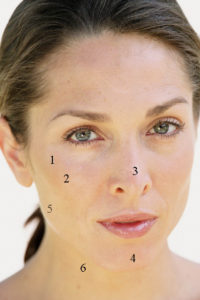I frequently see patients who desire greater facial definition. Usually these are younger men and women and much of their desire comes from having a fuller or fatter type face. Most of the time they have lost some weight but can’t lose it in the face. Others have never had a weight problem but want to have a more ‘chiseled’ facial appearance….this type of patient is almost exclusively a younger male patient. Regardless of their age, sex, and weight background, their objectives is to make their face appear less full with better accentuated facial features.

In the ‘non-heavy’ or non-weight loss facial patient, fat removals may not be necessary at all. If needed, it is only in the buccal (cheek) areas only. This type of facial definition patient requires bony enhancement mainly. This may be chin, cheeks, or jaw angle implants and a computer analysis can tell which combination may be best. The order of facial implantation is chin implants are done the most, jaw angle implants next, and cheek implants the least. For the young male patient that is looking for what I call the ‘male model’ look, all three facial implants may be necessary.
I would be remiss in this discussion if the concept of rhinoplasty is not brought up as part of the surgical options. A broad, wide, or long nose can also be a source of facial disharmony. Rhinoplasty surgery helps put the nose into better balance with the rest of the face and a well-proptioned nose in some patients can make a dramatic difference. While it is not the most common facial change in facial definition surgery, it must always be considered in diagnosing what makes a patient’s face unbalanced.
Enhancing and redefining facial contours is a combination of fat removals and bony prominence enhancements. While none of these surgeries are difficult and all can be accomplished without facial scars, the most important part lies in the pre-surgical discussion and planning. These patients are highly self-conscious and, as a result, will be extremely critical of their surgical result. Thorough computer imaging and realistic goal-setting is the key in making the facial definition patient satisfied.
Dr. Barry Eppley
Indianapolis, Indiana


